 W
WOrestes Acquarone Salaberry was a Uruguayan lithographist, painter, cartoonist, watercolourist, sculptor and poet. Between 1909 and 1914 he was in charge of La Semana magazine.
 W
WAfewerk Tekle was an Ethiopian artist, particularly known for his paintings on African and Christian themes as well as his stained glass.
 W
WMassoud Arabshahi, was born in Tehran, Iran in 1935, and died there in Sept 16, 2019. He was an Iranian painter.
 W
WÁsgrímur Jónsson was an Icelandic painter, and one of the first in the country to make art a professional living.
 W
WRafael Pérez Giménez Barradas, was an Uruguayan modernist painter and graphic artist who worked in Spain.
 W
WJuan Manuel Blanes was a noted Uruguayan painter of the Realist school.
 W
WJuan José Calandria was a Uruguayan painter and sculptor.
 W
WCarlos Cañas was a Salvadoran painter who studied art and theory at the School of Arts of El Salvador. In 1950, he received a scholarship to study art, history, aesthetics, and literature in Madrid at the Real Academia de Bellas Artes de San Fernando.
 W
WRimer Cardillo is a Uruguayan visual artist and engraver of extensive international experience who has lived in the United States since 1979.
 W
WJosep Collell was a Catalan painter and ceramicist who lived in Montevideo from 1950, where he developed his artistic career. He was a member of the Taller Torres-Garcia and in 1955 he created, together with his wife Carmen Cano, the Taller Collell of ceramics where for thirty years they taught their ceramic technique, the burnished engobe.
 W
WHieronimo Custodis was a Flemish portrait painter active in England in the reign of Elizabeth I.
 W
WViyé Diba is a Senegalese painter. His work can be seen at the Brooklyn Museum and the National Museum of African Art.
 W
WRabah Driassa is an Algerian painter and singer interpreting folk music. He was mostly active between the 1960s and the 1980s where a number of his songs became national hits in Algeria.
 W
WPedro Figari was a Uruguayan painter, lawyer, writer, and politician. Although he did not begin the practice until his later years, he is best known as an early modernist painter who emphasized capturing the everyday aspects of life in his work. In most of his pieces, he attempts to capture the essence of his home by painting local customs that he had observed in his childhood.
 W
WAblade Glover is a Ghanaian artist and educator. He has exhibited widely, building an international reputation over several decades, as well as being regarded as a seminal figure on the West African art scene. His work is held in many prestigious private and public collections, including at the Imperial Palace of Japan, the UNESCO headquarters in Paris and Chicago's O'Hare International Airport. He has received several national and international awards, including the Order of the Volta in Ghana, and is a Life Fellow of the Royal Society of Arts, London. He was Associate Professor and Head of the Department of Art Education and Dean of the College of Art at the Kwame Nkrumah University of Science and Technology until 1994.
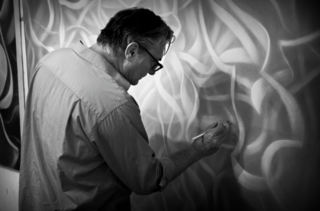 W
WShane Guffogg is an American artist associated with the abstract art movement. He has worked in the media of painting, drawing, and sculpture. Guffogg lives and works between Los Angeles and Strathmore, California.
 W
WJosé Gurvich was a Uruguayan painter, potter, musician and a key figure in the Constructivism Art movement.
 W
WJuan Bautista Diógenes Hequet, or Hecquet was an Uruguayan painter, graphic artist and professor, best known for his battle scenes.
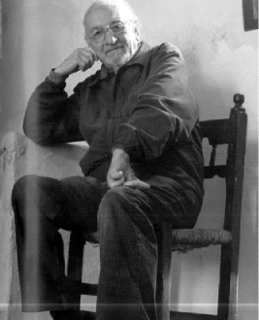 W
WAnhelo Hernández Ríos was a Uruguayan plastic artist and teacher.
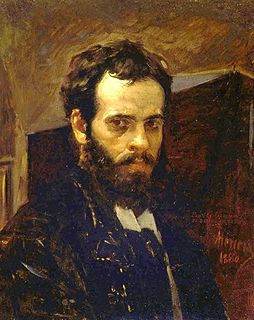 W
WAntonio Herrera Toro was a Venezuelan painter, art critic and professor.
 W
WCarlos María Herrera was a Uruguayan painter.
 W
WJacques Mory-Katmor was an Israeli bohemian/counterculture experimental filmmaker, painter, and, multimedia artist, of anarchical, underground, and, independent leanings.
 W
WIbrahima Kébé was a Senegalese Soninke painter. He lived until his death in Village des Arts de Dakar.
 W
WIsmaïla Manga was a Senegalese Jola painter.
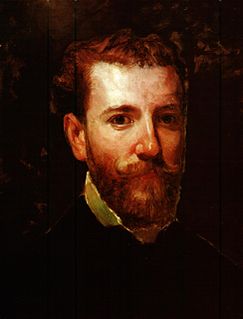 W
WEmilio Jacinto Mauri Ivern was a Venezuelan painter who specialized in portraits; mostly of an historical nature.
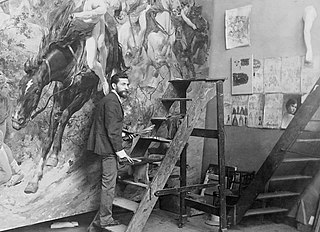 W
WFrancisco Arturo Michelena Castillo was a Venezuelan painter known for his historical and genre scenes and portraits.
 W
WYoryi Morel was a painter from the Dominican Republic. Along with Jaime Colson and Darío Suro, he is considered one of the founders of the modernist school of Dominican painting.
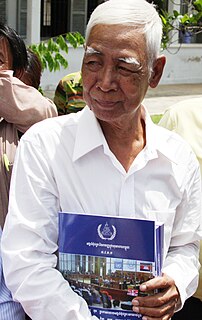 W
WVann Nath was a Cambodian painter, artist, writer, and human rights activist. He was the eighth Cambodian to win the Lillian Hellman/Hammett Award award since 1995. He was one of only seven known adult survivors of S-21 camp, where 20,000 Cambodians were tortured and executed during the Khmer Rouge regime.
 W
WJosé Sobral de Almada Negreiros was a Portuguese artist. He was born in the colony of Portuguese São Tomé and Príncipe, the son of a Portuguese father, António Lobo de Almada Negreiros, and a Santomean mother, Elvira Freire Sobral. Besides literature and painting, Almada developed ballet choreographies, and worked on tapestry, engraving, murals, caricature, mosaic, azulejo and stained glass.
 W
WAlejandro Otero was a Venezuelan painter of Geometric abstraction, a sculptor, a writer and a cultural promoter. He was a founding member of the Los Disidentes group.
 W
WEmilio Pettoruti (1892–1971) was an Argentine painter, who caused a scandal with his avant-garde cubist exhibition in 1924 in Buenos Aires. At the beginning of the twentieth century, Buenos Aires was a city full of artistic development. Pettoruti's career was thriving during the 1920s when "Argentina witnessed a decade of dynamic artistic activity; it was an era of euphoria, a time when the definition of modernity was developed." While Pettoruti was influenced by Cubism, Futurism, Constructivism, and Abstraction, he did not claim to paint in any of those styles in particular. Exhibiting all over Europe and Argentina, Emilio Pettoruti is remembered as one of the most influential artists in Argentina in the 20th century for his unique style and vision.
 W
WNiko Pirosmani, simply referred to as Nikala (ნიკალა) (1862–1918), was a Georgian naïve painter who posthumously rose to prominence. Relatively poor for most of his life, he worked a variety of ordinary jobs. His rustic, everyday scenes are celebrated today for their depiction of the Georgia of Pirosmani's lifetime, and he has become one of the country's most beloved artistic figures.
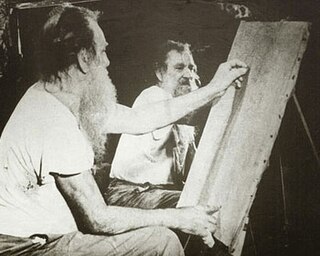 W
WArmando Reverón was a Venezuelan painter and sculptor, precursor of Arte Povera and considered one of the most important of the 20th century in Latin America. While his mental health deteriorated throughout his life, his artistic abilities remained. His house by the northern coast of Venezuela housed the Reveron Museum, although it was severely damaged by the Vargas mudslides in December 1999. He is the subject of various homages in different media, and is remembered for his "muñecas" or dolls.
 W
WJorge Riveros is a Colombian painter, sculptor and illustrator.
 W
WCristóbal Rojas was one of the most important and high-profile Venezuelan painters of the 19th century. Rojas's styles varied considerably throughout his life, and he displayed talents in painting that ranged primarily for dramatic effect, to works done in the impressionist style.
 W
WCarlos Federico Sáez was an artist from Uruguay.
 W
WLuis Salvador Efraín Salazar Arrué, known as Salarrué, was a Salvadorian writer, poet, and painter.
 W
WBritánico Antonio Salas Díaz, better known as Tito Salas, was a Venezuelan painter, considered a significant contributor in the development of Venezuelan modern art.
 W
WBraulio Salazar (1917–2008) was a Venezuelan painter.
 W
WLasar Segall was a Lithuanian Jewish and Brazilian painter, engraver and sculptor. Segall's work is derived from impressionism, expressionism and modernism. His most significant themes were depictions of human suffering, war, persecution and prostitution.
 W
WLuis Alberto Solari was a painter and engraver from Uruguay.
 W
WLevan Songulashvili is a Georgian-born New York-based visual artist; painter, draughtsman, installation and multimedia video artist.
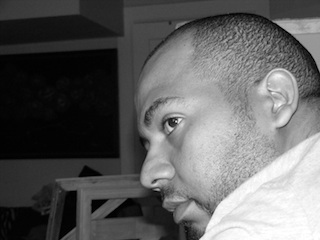 W
WEdward Telleria is an artist from the Dominican Republic, known for his paintings of eyes, horses and roses.
 W
WÞórarinn Benedikt Þorláksson was one of Iceland's first contemporary painters, the first Icelander to exhibit paintings in Iceland, and recipient of the first public grant that country made to a painter.
 W
WMartín Tovar y Tovar was a Venezuelan painter, best known for his portraits and historical scenes.
 W
WAbelardo Rodríguez Urdaneta was a Dominican sculptor, photographer, painter and educator. He is considered to be one of the founders of modern Dominican sculpture.
 W
WJuan de Valdés Leal was a Spanish painter and etcher of the Baroque era.
 W
WJuan Fernando Vieytes Pérez, born in Montevideo on January 5, 1916, was a famous Uruguayan painter, and visual artist. He won multiple national prizes before his death on April 7, 1962.
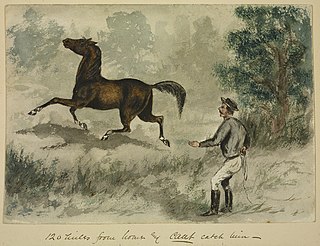 W
WHarold Bullock Webster (1855–1942) was a self-taught painter who worked in Canada, the U.K., and New Zealand.
 W
WJosé Luis Zorrilla de San Martín was a Uruguayan sculptor and painter. One of the pivotal sculptors from Uruguay, his most significant impact was through the monuments he created in the capital city of Montevideo. His style displayed elements of aesthetic baroque incorporated with modern sculpture.